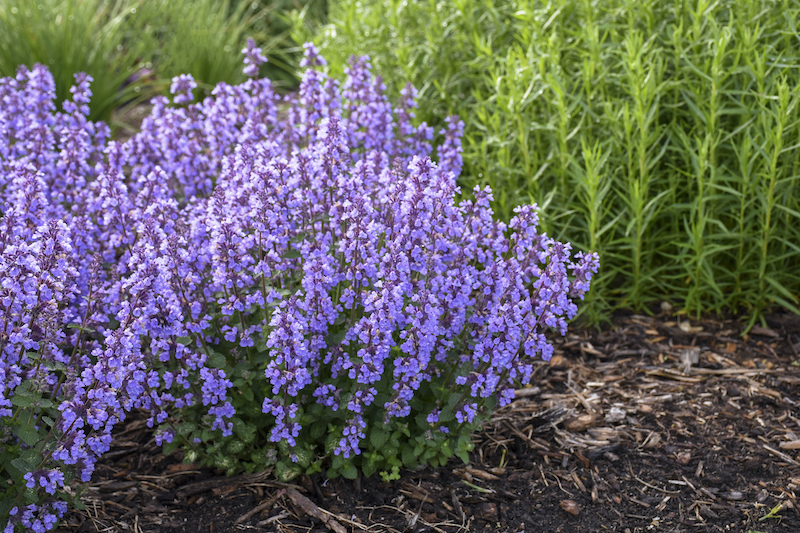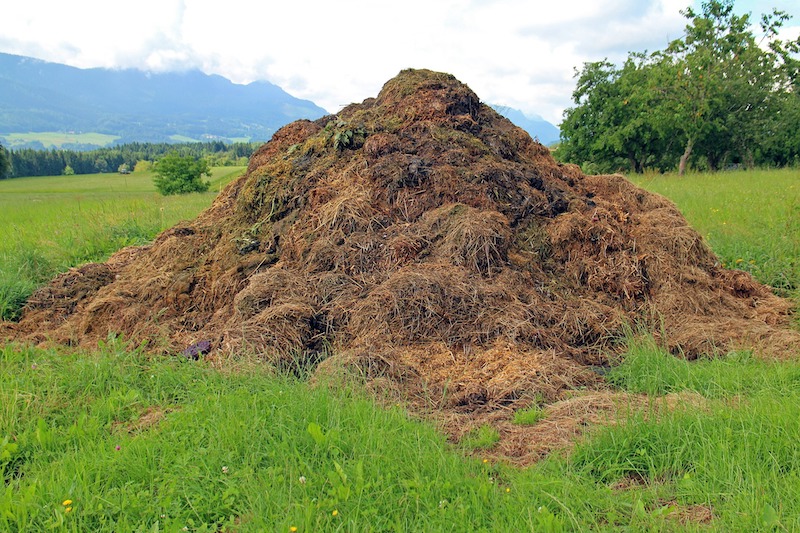Catmint is an ornamental perennial that is grown for both the lovely silvery green foliage and giant spikes of flowers in shades of blue and purple. The best way to ensure that Catmint maintains a vigorous blooming and growth habit is annual maintenance, which includes fertilizing. Fertilizing Catmint is especially important in climates that may have heavy rain throughout the winter months, which leaches nutrients out of the soil. Plants will give you clues as to how much fertilizer is really needed.
If the rate of growth or blooming has decreased over time, then a boost in nutrition is needed. If a plant develops leggy or weak growth, then it may be receiving too much fertilizer. Over-fertilizing can also result in the deposit of excess salts in the soil that can become toxic to plants and the microorganisms over time.

How to Fertilize Catmint
Catmint is not picky about the pH of the soil it grows in. Anything from slightly acidic to mildly alkaline is suitable. A basic pH test can be performed to measure the pH level. If it is very acidic (levels of 4.0 or less), consider adding a lime soil conditioner to raise the pH closer to neutral. Extremely acidic soils can keep plants from extracting the right nutrients. Keeping the soil as close to neutral (7.0) will help keep Catmint very happy.

Best Time To Fertilize Catmint
Catmint does best with a boost at the very beginning of the spring as new growth emerges. A single application of a granular, slow-release fertilizer will slowly release nutrients all growing season. Fertilizers should not be applied late in the summer. Perennials need time to start hardening off as they prepare to go dormant for the winter. Catmint that is grown in containers should not be fertilized after the beginning of August.
Best Fertilizer For Catmint
Perennials appreciate well-balanced, slow-release food that will support strong foliage, stems, flowering, and root growth. Look for formulas with a slightly higher K (potassium) content to encourage strong root development. Organic granular fertilizers are often slow-release formulas with lower nutrient concentrations than manufactured fertilizers. These organic products promote steady, even growth, resulting in a healthier, longer-living perennial. Brands to look for are Dr. Earth, Espoma, and Whitney Farms.
Catmint Fertilizing Tips
- Fertilize Catmint once in the early spring with a slow-release fertilizer
- Well-balanced fertilizers promote overall plant health
- Always follow the manufacturer’s application guidelines
- Over-fertilizing can damage plants and cause a buildup of salts in the soil.
Warnings
-Always wear protective gloves and a face mask when handling chemical fertilizers.
-Closely follow all directions and storage guidelines that are on the fertilizer label.
 |
Author Robbin Small - Published 7-14-2022 |
